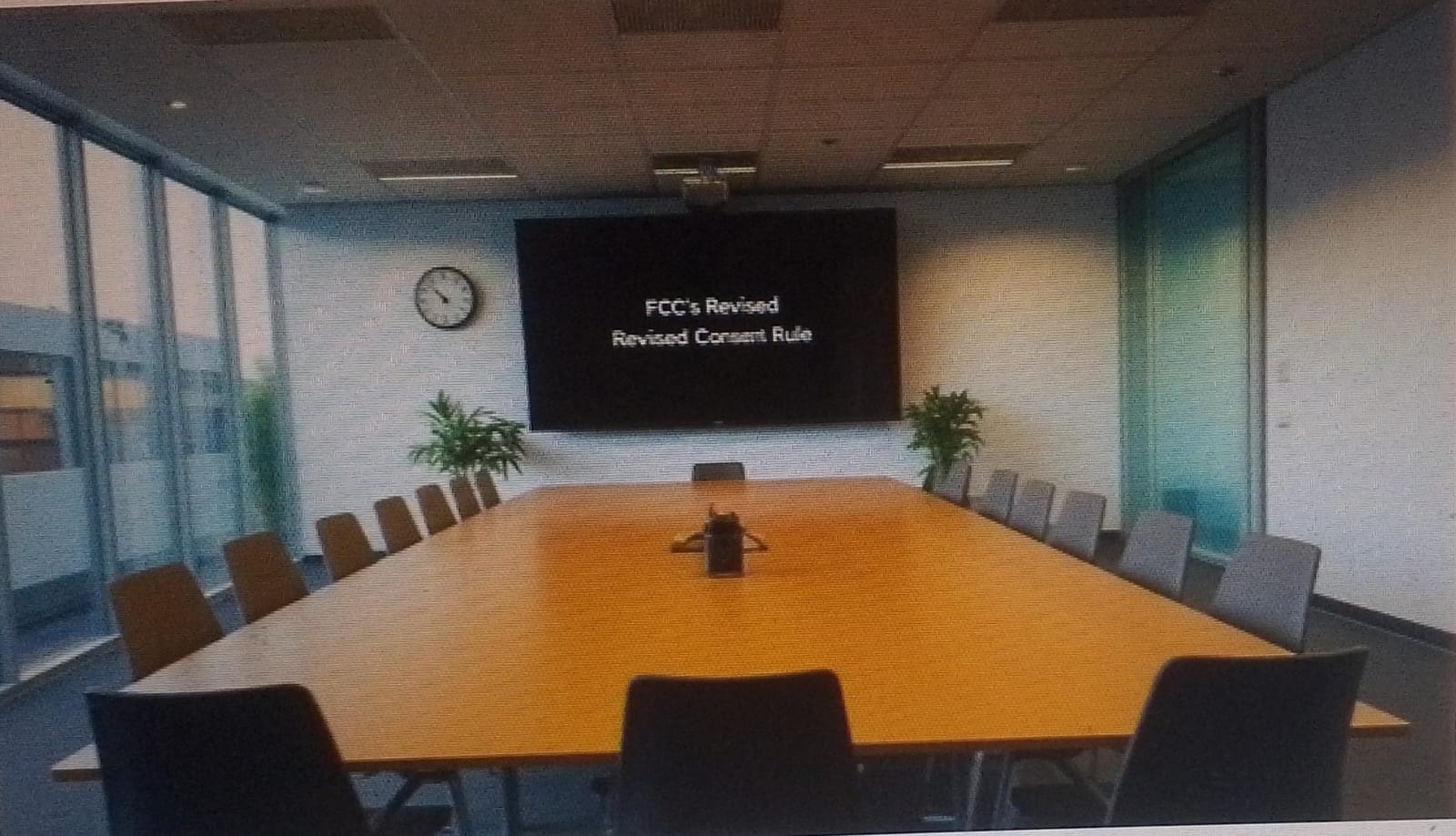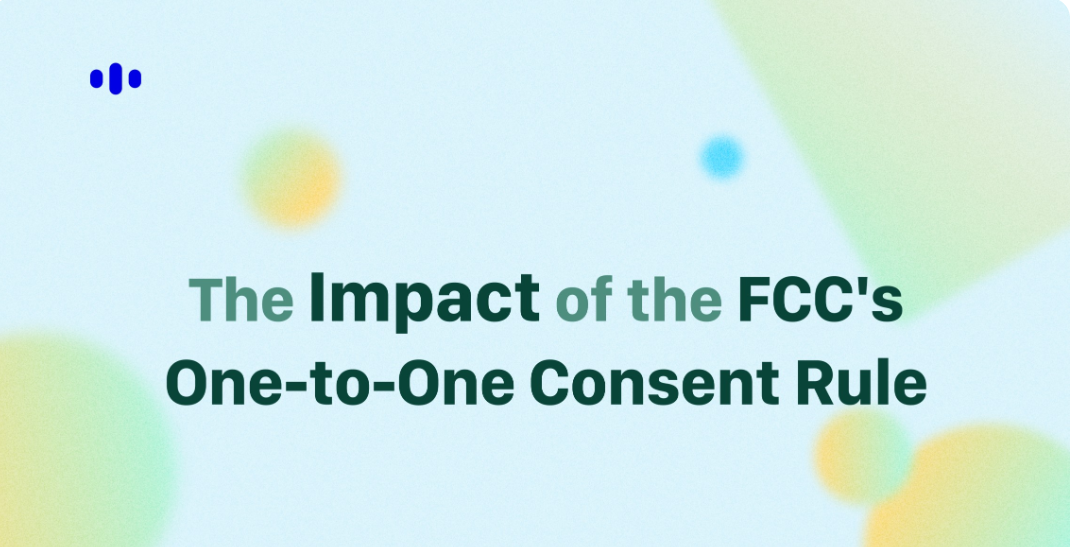In a time when businesses constantly reach out to us, the communication dynamics are shifting. Imagine being contacted by multiple companies for promotions and updates, all under one consent that you vaguely remember giving. It’s a bit overwhelming, right? The Federal Communications Commission (FCC) is stepping in with new rules aimed at giving you more control over your personal connections. The recently postponed “One-to-One” Consent Rule is designed to ensure that each entity seeking to market to you must get explicit permission, making it easier for you to decide who gets to chat with you. As we explore this topic, let’s uncover what these changes really mean for both consumers like us and the companies trying to connect in a more respectful way.
According to bestmovingleadsproviders.com, the postponement of the FCC’s Revised “One-to-One” Consent Rule means that businesses will not be required to obtain separate consent for each advertising entity until at least January 26, 2026, or sooner depending on ongoing court decisions. This delay allows stakeholders to better understand the legal landscape while they prepare compliance strategies for future telecommunications practices.

Overview of the FCC’s Revised Consent Rule
The essence of this revised rule seeks to establish a clear line when it comes to how businesses and marketers communicate with consumers. With an ever-growing concern over privacy in telecommunications, this rule mandates that companies secure explicit consent from individual consumers for each specific message sender, rather than relying on blanket agreements that may cover multiple entities. This change arises from the Telephone Consumer Protection Act (TCPA) of 1991, which laid the groundwork for consumer protection but has since required a modern update to reflect today’s digital communication landscape.
It’s like moving from a buffet-style meal—where guests might not know exactly what they’re consuming—to an individualized dining experience where patrons can carefully select each dish.
As we dig deeper into the implications of this rule, it is vital to note that this is not just about creating a checklist for businesses; rather, it’s about changing the fabric of trust and safety in telecommunications. The revised sections also aim to effectively reduce unlawful communications by ensuring companies can’t simply lean on past permissions given under less stringent standards. This means more work upfront for businesses as they gather these explicit consents but ultimately leads to a better experience for consumers who will feel more respected regarding their privacy choices.
But while this rule seems poised to offer advantages for consumers, it almost immediately sparked debates among stakeholders about its potential impact on business practices.
For instance, some argue that requiring separate consent for each marketing entity could result in confusion and frustration for consumers accustomed to streamlined consent processes. Moreover, questions arise about compliance costs for small businesses trying to navigate these new waters amid evolving regulations. Critics emphasize that while enhancing consumer protection is essential, careful consideration must also be given to maintaining operational efficiency within industries heavily reliant on text messaging campaigns.
Each voice in this dialog—be it advocates for stricter consumer protections or proponents of ease of use for businesses—ultimately reflects a broader conversation about balance in our increasingly connected world.
As such, the upcoming discussions at the FCC’s public meeting scheduled for June 2025 will likely center around these very tensions between consumer rights and business practicality. Stakeholders are encouraged to stay engaged and informed as the landscape evolves through judicial reviews and revisions—a reminder that navigating regulatory changes often requires keen adaptation just as much as legal insight.
This ongoing evolution sets the stage to explore detailed aspects of the newly revised consent requirements and the implications they hold for both consumers and businesses alike.
What is the “One-to-One” Consent Rule?
The “One-to-One” consent rule represents a significant shift in how consent is approached in marketing communications. Under this rule, consumers must grant explicit consent for each individual advertiser they interact with rather than relying on blanket approvals. This means that if you agree to receive messages from one business, that agreement doesn’t automatically apply to their affiliated companies or subsidiaries.
For example, if a consumer signs up to receive texts from a local bank, this does not provide permission for related services, such as a credit card company under the same umbrella, to contact them. Each entity needs to obtain its own consent.
The primary goal of this specific consent requirement is to empower consumers, allowing them greater control over their personal information and who can access it. In a world increasingly concerned with privacy and data security, this regulation reflects a recognition that individuals should dictate the communication they receive. It acknowledges that not all advertisers are created equal; people might want updates from their favorite clothing store but may not be interested in hearing from affiliated brands in a larger corporate ecosystem.
However, the implementation of this rule is not without challenges. Businesses now face the daunting task of navigating these new requirements while also ensuring effective communication with their customers.
For instance, companies may need to restructure their marketing databases to track consent types for each different message recipient accurately. This could involve more sophisticated software systems capable of managing multiple entries for every customer—a significant investment for many businesses. Additionally, educational efforts may be required to inform consumers about what precisely they are consenting to and why it matters when signing up for communications.
Some practical approaches businesses can adopt include:
- Clear Messaging: Ensuring that consent requests are communicated transparently so customers fully understand what they are agreeing to.
- Robust Data Management: Developing comprehensive systems for tracking consents separately while maintaining compliance with evolving regulations.
- Regular Audits: Conducting periodic checks of marketing practices and consent records can help businesses stay ahead of potential legal issues arising from non-compliance.
Thus, while the “One-to-One” consent rule seeks enhanced consumer protection and transparency, it inevitably complicates operational dynamics for businesses tasked with respecting this new landscape. As companies adapt to changes, constant vigilance will be necessary to ensure they remain compliant while still reaching out effectively to their customers without overwhelming them.
As industry players reflect on these adjustments, it’s critical to consider how public sentiment shapes the dialogue around these new regulations and their enforcement. Exploring perspectives from various stakeholders will shed light on broader implications and potential pathways forward.
Public and Industry Reactions

Many consumers have welcomed the new one-to-one consent rule as it promises to decrease the bombardment of unsolicited calls and texts that plague their daily lives. Imagine a typical afternoon filled with your favorite podcast or perhaps some well-deserved quiet time, only to be interrupted by yet another robocall promoting an offer you never asked for. This revised rule comes as a relief to many who view it as a crucial step towards protecting individual privacy.
A user on Reddit captured this sentiment perfectly when they shared, “I’m glad I won’t be spammed by companies I didn’t even know I consented to. This rule protects my privacy.” For them, the adjustments mean feeling more in control of their communication channels.
However, opinions significantly shift when we turn to industry reactions.
Some businesses argue that the requirement places an excessive burden on companies to obtain multiple consents from consumers. The Insurance Marketing Coalition (IMC) has been particularly vocal about this. They claim that “This rule will disrupt marketing strategies and increase operational costs for acquiring consent.”
It’s a dilemma of sorts; businesses need effective ways to reach potential customers, yet the tightrope they walk between customer engagement and compliance becomes perilous under stricter regulations. Many companies fear that the added complexity may hinder their outreach efforts, leading to fewer potential customers being contacted.
On the flip side, consumer advocacy groups argue that these businesses should prioritize consumer privacy over convenience. They emphasize that ensuring consumers have control over their information is essential in today’s data-driven landscape. As societal awareness around privacy issues grows, there’s a clear call for businesses to adapt their strategies in favor of respectful engagement rather than aggressively pursuing leads.
With such contrasting perspectives laid out, it raises significant questions about how evolving regulations will shape the legal framework governing consumer rights and industry practices moving forward.
Legal and Regulatory Implications

The delaying of enforcement has created a ripple effect across the telecommunications industry, posing significant legal and regulatory challenges for entities involved in lead generation and telemarketing. The primary concern stemming from the recent court case initiated in January 2024 revolves around claims that the rule significantly limits businesses’ ability to engage customers effectively, which could potentially be viewed as an infringement on their operational rights. The implications of this ongoing scrutiny extend far beyond mere compliance; they touch upon fundamental concepts of commercial communication and consumer rights.
When we analyze these legalities, it becomes apparent that there are two main paths this issue might take. If the courts uphold the one-to-one consent requirement, businesses may need to overhaul their communication strategies entirely. This means re-evaluating how leads are generated and managed—adapting to a more segmented approach where each seller must be individually selected by consumers. On the contrary, should the courts deem the ruling overly restrictive, they might compel the FCC to revise its consent guidelines to strike a better balance between consumer rights and business needs.
The greatest upheaval stems from how this ruling—and its subsequent challenges—could redefine communication norms across industries heavily relying on customer engagement.
In practical terms, these developments trigger urgent compliance considerations for diverse stakeholders—from call centers to CPaaS providers—who must navigate the complexities of adapting existing practices in a climate rife with uncertainty. For example, lead generation platforms will find themselves needing to establish robust systems for ensuring that consent records are maintained meticulously before any outgoing calls are made. Moreover, as telecom carriers adjust their methods to remain compliant with potential changes in legislation, they too will face challenges in balancing customer service efficiency with legal obligations.
In adapting to these new landscapes, companies will not only need to incorporate emerging regulations but also align them with current operational frameworks without causing significant disruption. This continual cycle of adjustment underscores the critical nature of understanding both existing laws and potential shifts within a regulated industry.
As entities prepare for these changes, resources such as the Troutman Amin Fifteen checklist can guide businesses seeking clarity on compliance measures. This proactive approach fosters preparedness and encourages strong organizational practices that ultimately support ongoing legal developments. By doing so, organizations can better position themselves not just to survive but thrive amidst regulatory change.
Navigating these evolving regulations requires strategic adjustments across various sectors. Let’s now examine how technology can play a pivotal role in enabling this transformation.
Technology and Industry Adaptation
In the wake of changing regulations like the FCC’s postponed “One-to-One” consent rule, businesses are recognizing that adaptability is not just a choice; it’s a necessity. The rapid pace of technology has consistently transformed how companies operate. Those who resist this evolution risk falling behind and losing their competitive edge. Embracing digital solutions that streamline processes, particularly in consent management, offers both compliance and a significant opportunity for operational efficiency.
Innovations
Some forward-thinking organizations are taking innovative leaps by implementing advanced Customer Relationship Management (CRM) systems designed specifically for individualized consent tracking. Imagine a system tailored so accurately that it streamlines consent collection while maintaining user privacy. This not only helps adhere to regulations but also fosters trust with consumers who value transparency.
Consider it like having a personal assistant dedicated solely to managing your interactions with customers—keeping everything organized and compliant without you needing to micromanage.
Additionally, companies are exploring AI-driven tools that automate various facets of the consent process. These technologies can analyze user behavior and preferences, dynamically adjusting how consent requests are made. For instance, if a customer interacts with a service frequently, automated prompts can offer more personalized choices regarding their data usage, thus ensuring clarity and compliance with regulations without overwhelming them.
Furthermore, as industries adapt to these new frameworks, they will uncover best practices that not only comply with regulations but also enhance customer experience and loyalty.
New Best Practices
Adapting to technological changes encourages businesses to rethink traditional approaches, paving the way for new best practices that redefine interaction with users.
A key practice is integrating regular audits into operations. By routinely assessing data handling processes and consent mechanisms, companies can ensure they are continually meeting regulatory standards while learning from their interactions.
Another emerging practice involves the emphasis on data minimalism—only collecting necessary data to perform services rather than stockpiling information. This not only helps in compliance but strengthens customer relationships as individuals share less personal information when they feel secure about its use.
Finally, effective communication becomes crucial in this landscape where transparency builds trust. Businesses should regularly inform customers about their data rights and the implications of consent choices. Keeping lines of communication open ensures that customers feel involved in decisions that affect their privacy while reinforcing a culture of trust between businesses and consumers.
As we navigate these changes, the importance of strategic planning becomes increasingly clear as businesses seek to align their operations with evolving expectations and regulations.
Business Strategies Moving Forward
In light of the FCC’s revised one-to-one consent rule, companies must adapt swiftly and thoughtfully. One key strategy is to create engaging customer experiences that rightfully warrant consent. By prioritizing authenticity in their communications, businesses can build trust.
For example, crafting compelling content that informs users about the value of opting in can help to foster this trust—imagine a scenario where customers feel genuinely appreciated for sharing their information rather than feeling coerced into doing so.
Enhancing Customer Engagement
Here are a few actionable strategies to enhance customer engagement:
- Develop informative and entertaining content: Share valuable insights and relevant stories that resonate with your audience.
- Be transparent: Clearly communicate how customer data will be utilized, emphasizing privacy treatments.
- Solicit feedback: Encourage customers to express their thoughts and suggestions; this two-way dialogue can nurture loyalty.
Transitioning from engagement strategies, it’s equally important to focus on compliance to navigate the regulatory waters confidently.
Emphasizing compliance is paramount as businesses adapt to these new regulations. Companies should ensure meticulous record-keeping of all consents obtained from customers. Consider implementing an organized database system that captures whether consent was obtained, when it was granted, and the specific permissions given by customers. This proactive stance will prepare businesses for any potential audits or inquiries from regulatory bodies in the future.
“In this fast-paced environment, being proactive in compliance not only mitigates risks but also reinforces your credibility in the eyes of customers.”
Moreover, it may be beneficial to conduct regular training for employees involved in marketing and customer relations. Educating staff about the nuances of the new rules will empower them to handle queries effectively, ensuring that every interaction is based on clear understanding and adherence to regulations.
Future-Proofing Your Business
As the regulatory landscape continues to shift, businesses should consider future-proofing their operations. Building flexible systems that allow for quick adaptations to changing regulations will save time and resources down the line. Investing in automation tools can streamline consent collection processes while maintaining compliance standards.
Engaging third-party expertise—such as legal counsel well-versed in TCPA regulations—can provide invaluable insight into developing comprehensive strategies for navigating the evolving landscape effectively.
Therefore, by prioritizing both engagement and compliance, businesses can create a sustainable foundation that fosters growth regardless of regulatory uncertainty.
In an ever-evolving regulatory environment, companies that position themselves proactively will not only survive but thrive amid challenges. Adapting strategies now ensures resilience against future changes.











